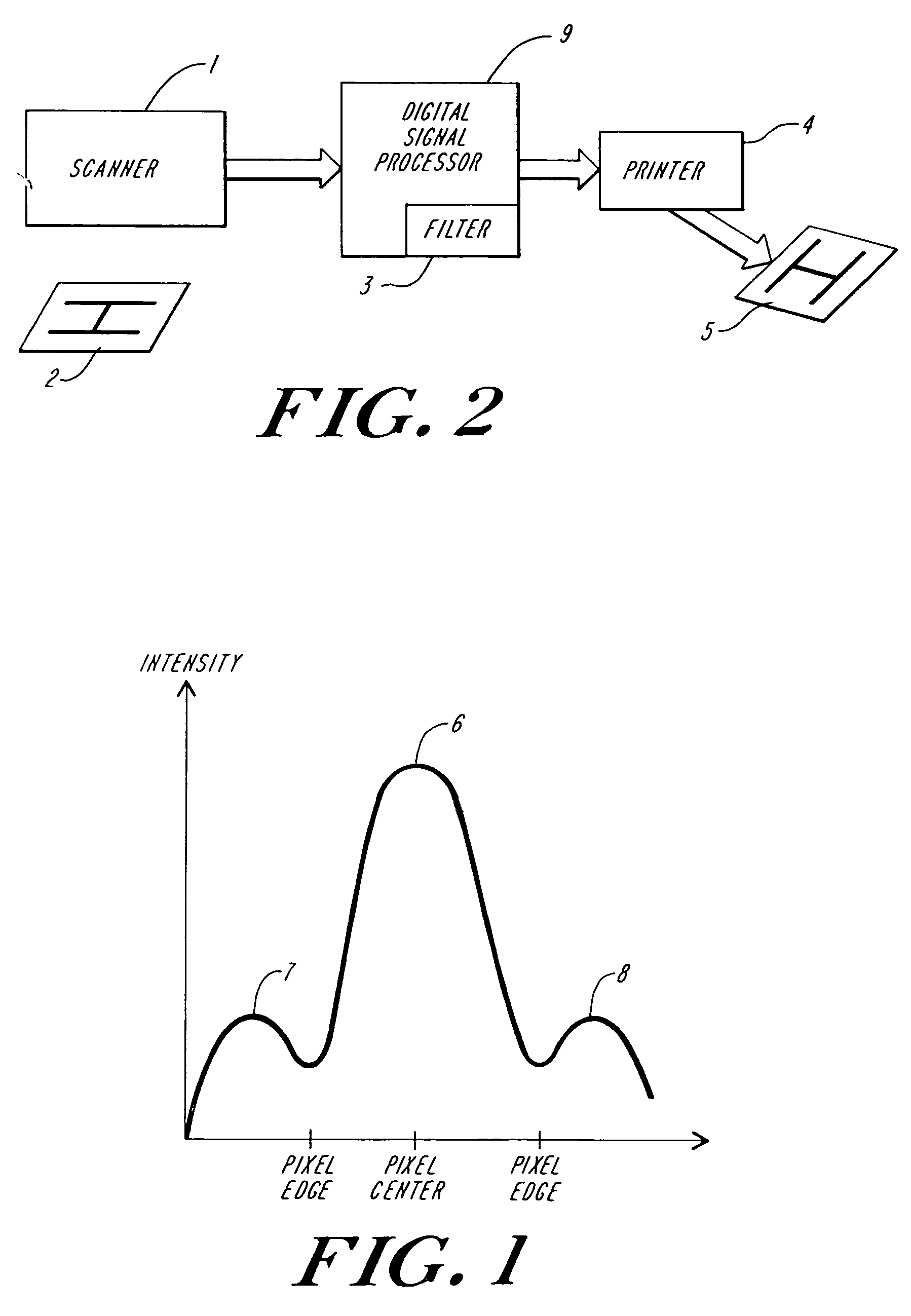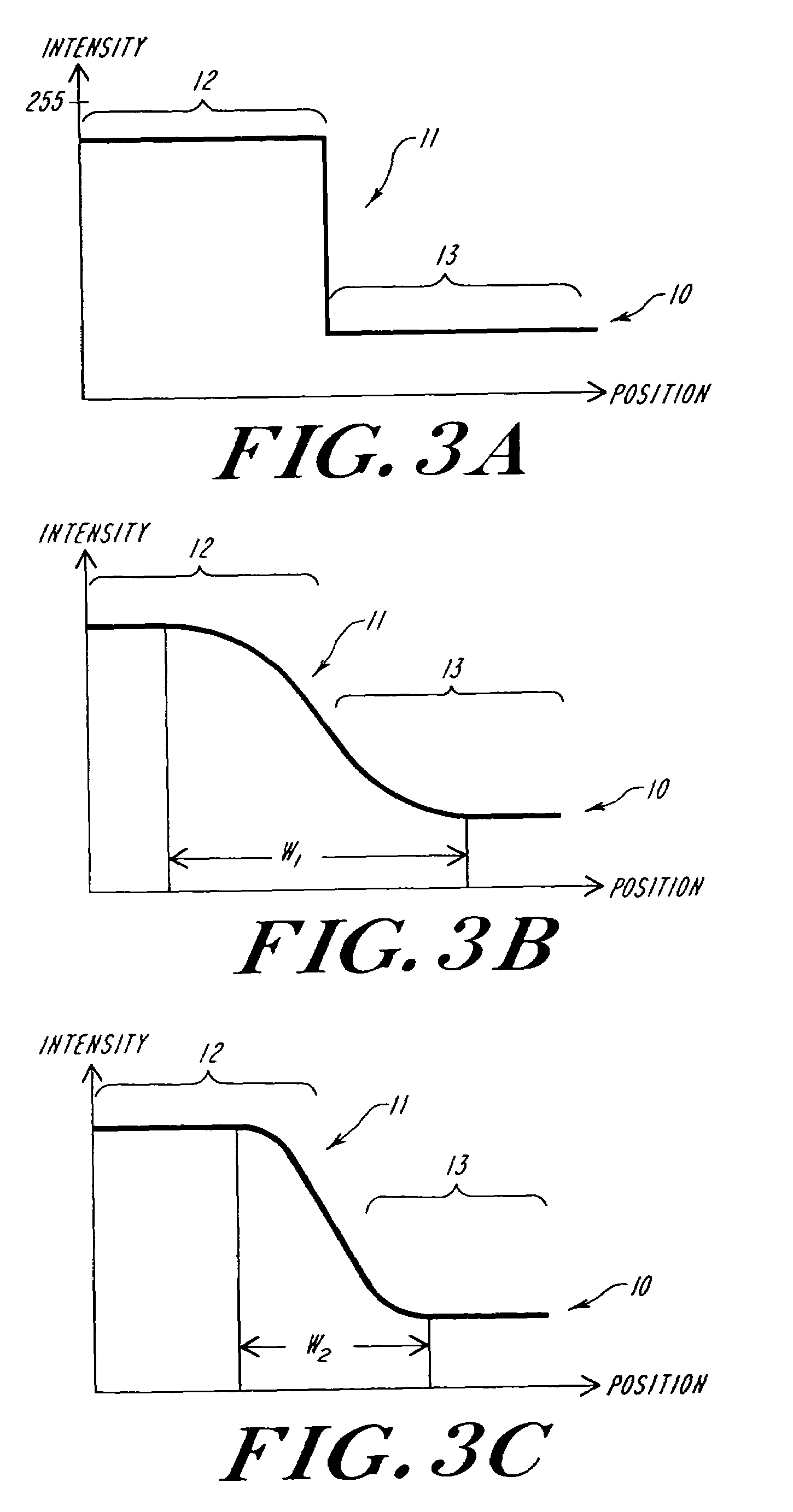Edge detection and sharpening process for an image
a technology of image edges and detection, applied in the field of image enhancement, can solve the problems of printers still corrupting the image at the edges of images, affecting the quality of images, so as to improve both photo and text quality, enhance edges, and increase the intensity level of output pixels
- Summary
- Abstract
- Description
- Claims
- Application Information
AI Technical Summary
Benefits of technology
Problems solved by technology
Method used
Image
Examples
Embodiment Construction
[0030]The illustrative embodiment of the present invention provides a method and device for sharpening edges of an image during image processing. The illustrative embodiment will be described below relative to an implementation in a scan-to-print system for generating a copy of an original image. Nevertheless, those skilled in the art will appreciate that the present invention may also be implemented on other types of image forming systems, such as a fax machine, a personal computer or a photocopier.
[0031]The illustrative embodiment enhances the quality of a printed image by sharpening the edges of the image. The present invention allows a user to adjust the degree of sharpening according to the amount of distortion in the image. The present invention operates in real time, to improve image quality as image data is processed by an imaging system.
[0032]FIG. 2 illustrates a scan-to-print image forming system 9 suitable for practicing the illustrative embodiment of the present inventio...
PUM
 Login to View More
Login to View More Abstract
Description
Claims
Application Information
 Login to View More
Login to View More - R&D
- Intellectual Property
- Life Sciences
- Materials
- Tech Scout
- Unparalleled Data Quality
- Higher Quality Content
- 60% Fewer Hallucinations
Browse by: Latest US Patents, China's latest patents, Technical Efficacy Thesaurus, Application Domain, Technology Topic, Popular Technical Reports.
© 2025 PatSnap. All rights reserved.Legal|Privacy policy|Modern Slavery Act Transparency Statement|Sitemap|About US| Contact US: help@patsnap.com



